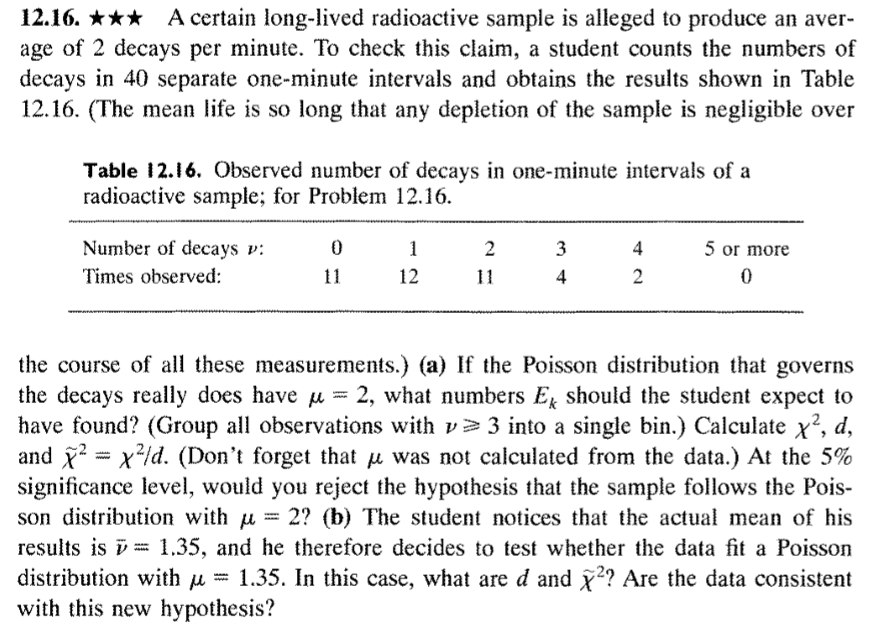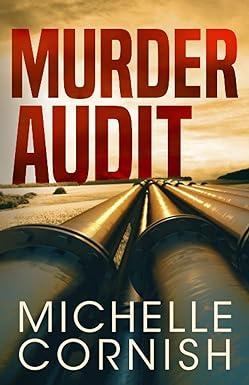
12.16. *** A certain long-lived radioactive sample is alleged to produce an aver- age of 2 decays per minute. To check this claim, a student counts the numbers of decays in 40 separate one-minute intervals and obtains the results shown in Table 12.16. (The mean life is so long that any depletion of the sample is negligible over Table 12.16. Observed number of decays in one-minute intervals of a radioactive sample; for Problem 12.16. Number of decays v: Times observed: 0 11 1 12 2 11 3 4 4 2 5 or more the course of all these measurements.) (a) If the Poisson distribution that governs the decays really does have u =2, what numbers E, should the student expect to have found? (Group all observations with v23 into a single bin.) Calculate x?, d, and x = x"/d. (Don't forget that he was not calculated from the data.) At the 5% significance level, would you reject the hypothesis that the sample follows the Pois- son distribution with u = 2? (b) The student notices that the actual mean of his results is 7 = 1.35, and he therefore decides to test whether the data fit a Poisson distribution with u = 1.35. In this case, what are d and ?? Are the data consistent with this new hypothesis? 12.16. *** A certain long-lived radioactive sample is alleged to produce an aver- age of 2 decays per minute. To check this claim, a student counts the numbers of decays in 40 separate one-minute intervals and obtains the results shown in Table 12.16. (The mean life is so long that any depletion of the sample is negligible over Table 12.16. Observed number of decays in one-minute intervals of a radioactive sample; for Problem 12.16. Number of decays v: Times observed: 0 11 1 12 2 11 3 4 4 2 5 or more the course of all these measurements.) (a) If the Poisson distribution that governs the decays really does have u =2, what numbers E, should the student expect to have found? (Group all observations with v23 into a single bin.) Calculate x?, d, and x = x"/d. (Don't forget that he was not calculated from the data.) At the 5% significance level, would you reject the hypothesis that the sample follows the Pois- son distribution with u = 2? (b) The student notices that the actual mean of his results is 7 = 1.35, and he therefore decides to test whether the data fit a Poisson distribution with u = 1.35. In this case, what are d and ?? Are the data consistent with this new hypothesis







